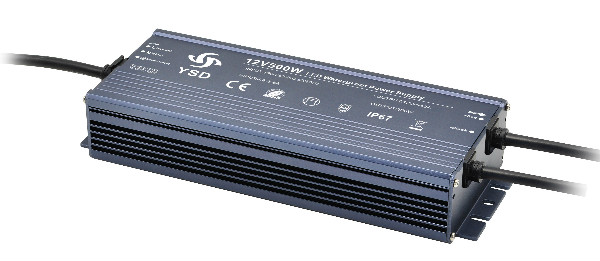What are the common faults of LED switching power supply
2019-12-27 17:08:29
What are the common faults of LED switching power supply
In general, a blown fuse indicates a problem with the internal wiring of the power supply. Because the power supply works in the state of high voltage and current, the fluctuation and surge of power grid voltage will cause the instantaneous increase of current in the power supply and make the fuse blow. It is important to check the rectifier diode, high-voltage filter electrolytic capacitor, inverter power switch tube, etc. at the input end of the power supply, and check whether this component has breakdown, open circuit, damage, etc. If the fuse is indeed broken, you should first check the components on the circuit board to see whether the surface of these components is burnt, and whether there is electrolyte overflow. If you do not find the above situation,
use a multimeter to measure whether the switch tube is broken or short circuited. Special attention shall be paid to: it is not allowed to directly start the machine after replacement when finding out the damage of a certain component, so it is likely that the replaced component will be damaged due to the failure of other high-voltage components. It is necessary to conduct a comprehensive inspection and measurement of all high-voltage components of the above circuit before the fuse is completely eliminated. No DC voltage output or unstable voltage output
If the fuse is intact, there is no output of DC voltage at all levels with load. This situation is mainly caused by the following reasons: open circuit and short circuit in the power supply, over-voltage and over-current protection circuit fault, auxiliary power supply fault, oscillation circuit not working, power load is too heavy, rectifier diode in high-frequency rectifier filter circuit is broken down, filter capacitor leakage, etc. When the secondary components are
measured with a multimeter and the breakdown of high frequency rectifier diode and load short circuit are eliminated, if the output is zero at this time, it is certain that the control circuit of the power supply is faulty. If some voltage output indicates that the former circuit works normally, the fault is in the high frequency rectifier filter circuit. The high frequency filter circuit is mainly composed of rectifier diode and low voltage filter capacitor. The breakdown of rectifier diode will cause no voltage output, and the leakage of filter capacitor will cause unstable output voltage and other faults. The damaged components can be detected by static measurement of corresponding components with multimeter.
Poor load capacity of power supply
Poor load capacity of power supply is a common fault, which usually occurs in old-fashioned or long-time power supply. The main reasons are aging of components, unstable operation of switch tube, and lack of timely cooling. It is important to check whether the zener diode is heated and leaking, whether the rectifier diode is damaged, and whether the high-voltage filter capacitor is damaged, etc







